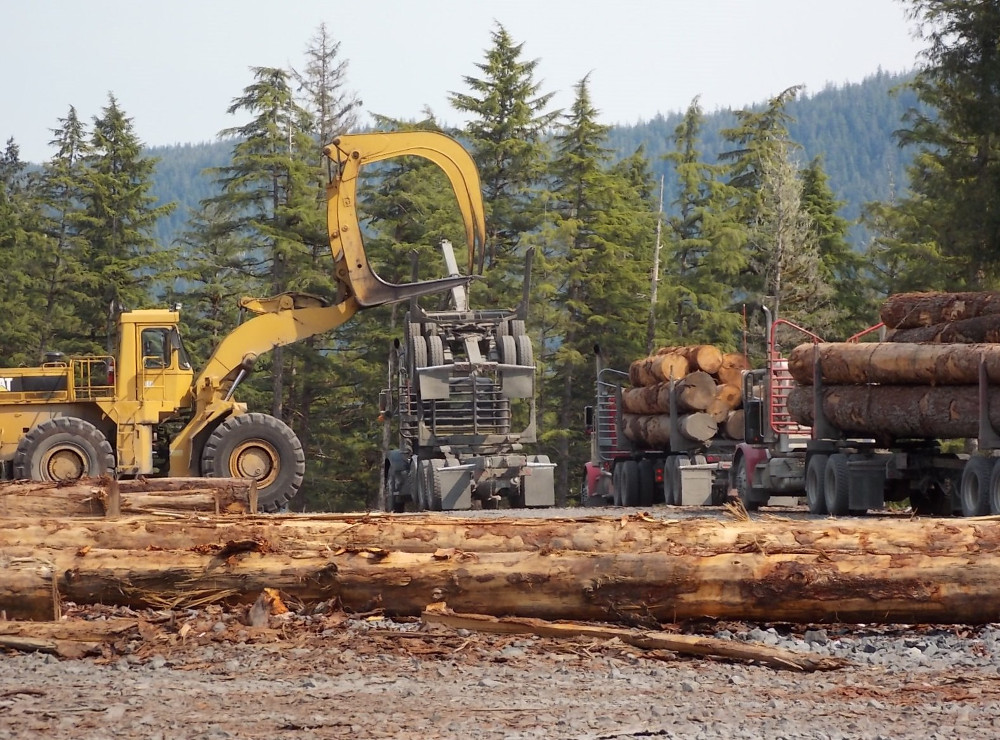
An internal audit by the U.S. Forest Service says the federal agency mismanaged two timber sales. The report blames pressure to meet timber harvest targets. Mistakes meant $2 million less for habitat restoration work on the Tongass National Forest. Auditors also found the sales failed to outline planned restoration work and potentially violated conflict of interest rules among other findings.
The August 2020 internal agency audit found problems with oversight and administration of two large timber sales on the Tongass National Forest in Southeast Alaska. It only saw the light of day after Public Employees for Environmental Responsibility sued for it. Jeff Ruch, Pacific director of the Maryland-based watchdog group said the report only tells part of the story.
“The report concludes that the problems were motivated by pressure to meet timber sale quotas but doesn’t explain pressure by whom, what about that pressure, how was it manifested, which officials were responsible,” Ruch said Monday. “And that sort of cryptic, unspecific kind of finding makes it difficult for the Forest Service to use it as a basis for reform.”
The report was done by an oversight branch of the Forest Service’s Washington Office. It reviewed the Big Thorne Stewardship Contract, awarded in 2014 to Viking Lumber on Prince of Wales Island. It found agency underestimated the volume by more than 10 percent, 12 million board feet of 98 million board feet.
By law the Forest Service isn’t allowed to put out timber sales that don’t pencil out for companies. If the cost of getting the wood out of the forest and to market is more than its worth, then it’s a no go. But this report says the agency was incorrect in its valuation of the timber, “making it possible for a positive value and ultimately helped the Tongass and the Region obtain its annual timber sale goal.” In the end, it effectively reduced the overall contract amount around $2 million to Viking, to avoid a lawsuit from the company. Proceeds from this type of sale are used for habitat and restoration work on the forest and the trees that are logged are also exchanged for that work by the purchasing company.
The report did not find that low value hemlock is being left uncut in the woods, as prior agency analysis had found. It states that “the contractor is cutting every decent hemlock in the forest.” The report does not include any mention of the Tonka timber sale near Petersburg that was flagged in prior internal reviews for sale oversight problems.
The agency also reviewed the state of Alaska’s Good Neighbor Authority Agreement from 2017. That agreement allows the state’s Division of Forestry to do the preparation, administration and oversight for logging on federal lands. Under that pact, nearly 30 million board feet on Kosciusko Island in southern Southeast was awarded to Alcan Timber of Ketchikan. But the auditors were concerned a over potential conflict of interest in the deal. That’s because the same unnamed person doing the appraisal for the state later contracted with the purchaser to do preparation work for logging. The report says that could give a person with privileged details of the sale the ability to gain financially.
Alcan’s Eric Nichols said a state employee with 40 years experience in Southeast Alaska did the appraisal and retired from the state after it was awarded to Alcan. That employee got an ethics clearance from the state and started a forestry consulting company doing timber sale layouts, Nichols writes in an email. And he says that people with this experience are “very hard to find with the downward spiral of the timber industry.”
The Forest Service’s report also notes problems with the state’s software for estimating timber, valuation of those trees and the agreement’s omission of habitat restoration work that is supposed to accompany the logging.
Environmentalists seized upon the critical audit to question the Forest Service’s timber management practices on the Tongass. Sally Schlichting is with the Southeast Alaska Conservation Council in Juneau. She said the 20-page audit’s findings are concerning.
“They really call into question whether the other timber sales that the Forest Service has planned are being properly developed and whether there are other issues out there with other timber sales that are not being properly managed,” Schlichting said.
Forest Service officials declined an interview. In a statement, the agency says it’s updating its policies to clearly define roles and responsibilities, strengthen internal controls over timber sales, improve oversight of the program, and provide additional training for employees.
Here’s the full statement:
“The USDA Forest Service takes seriously its obligation to ensure the accountability, integrity, and effectiveness of the work we perform. During routine reports on timber sales, the agency discovered some inconsistencies, which were addressed by Alaska Region 10 and validated through an internal audit. To ensure future work is completed in a consistent manner, Alaska Region 10 has already or will soon update its policies to clearly define roles and responsibilities, strengthen internal controls over timber sales, improve oversight of the program, and provide additional training for employees. We are confident we have sufficiently developed a plan to achieve more efficient and effective oversight of timber sales to help meet agency goals. The final report was released internally on August 18, 2020, and is now publicly available on the Forest Service website.”
State forester Chris Maisch was not available for an interview Monday. An agency spokesperson referred questions to the Forest Service. The timber industry group Alaska Forest Association also declined to comment.
(Editor’s note: this story has been corrected. The reduction in value of the Big Thorne contract is not paid by tax payers but impacts the habitat and forest restoration work that can happen on the Tongass.)









